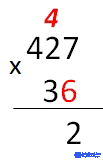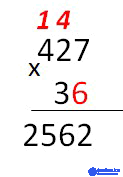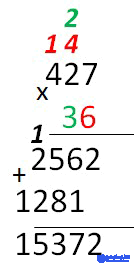Lecture
Let's solve an example:






The result of multiplication by the second digit must be recorded under the second digit of the result of the first action of multiplication.


Now, having mastered the multiplication column , you can multiply arbitrarily large numbers.
Comments
To leave a comment
Arithmetic
Terms: Arithmetic